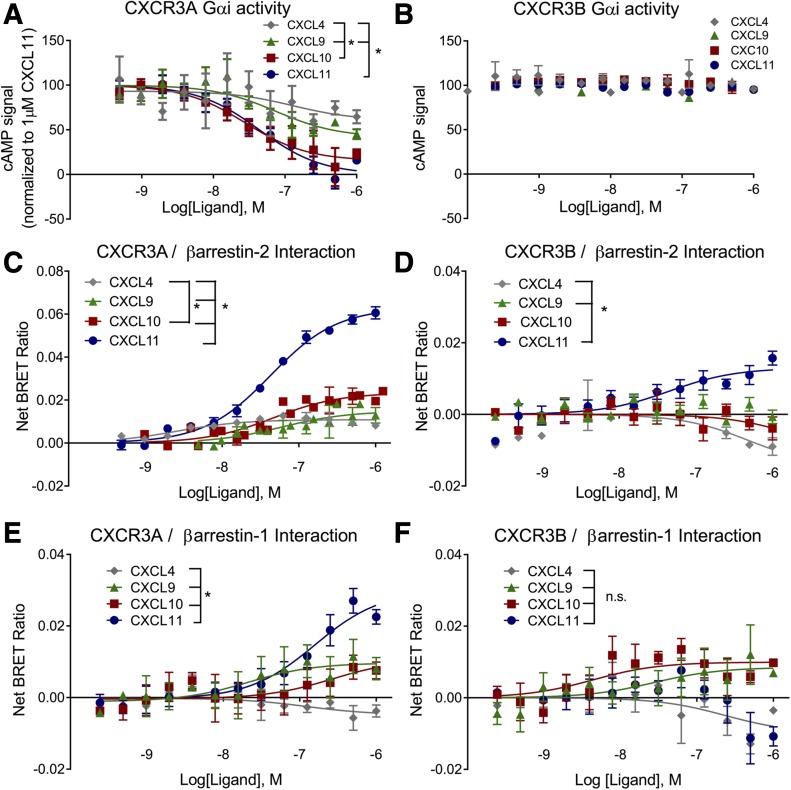Fig. 2.
Differential G protein activation and beta-arrestin recruitment by CXCR3 splice variants. (A) cAMP signal following transient CXCR3A expression in HEK 293 cells stably expressing the cAMP activated firefly luciferase. CXCL10 and CXCL11 are full agonists in their ability to inhibit cAMP production through CXCR3A, while CXCL4 and CXCL9 are partial agonists. (B) No Gαi activity is observed after transient transfection with CXCR3B. CXCL11 recruited βarr2-YFP to both CXCR3A-Rluc (C) and CXCR3B-Rluc (D) with higher efficacy than the other endogenous ligands. CXCL11 recruited βarr1-YFP to CXCR3A-Rluc with a significantly greater efficacy than CXCL4, but not significantly greater than CXCL9 or CXCL10 (E). At CXCR3B, no ligands were observed to be significantly different in recruiting βarr1-YFP (F). Best fit calculated by a 3-parameter fit, ± S.E.M., n ≥ 3 biologic replicates per treatment group. *P < 0.05, significant effect of ligand by two-way analysis of variance; n.s denotes not significant.

